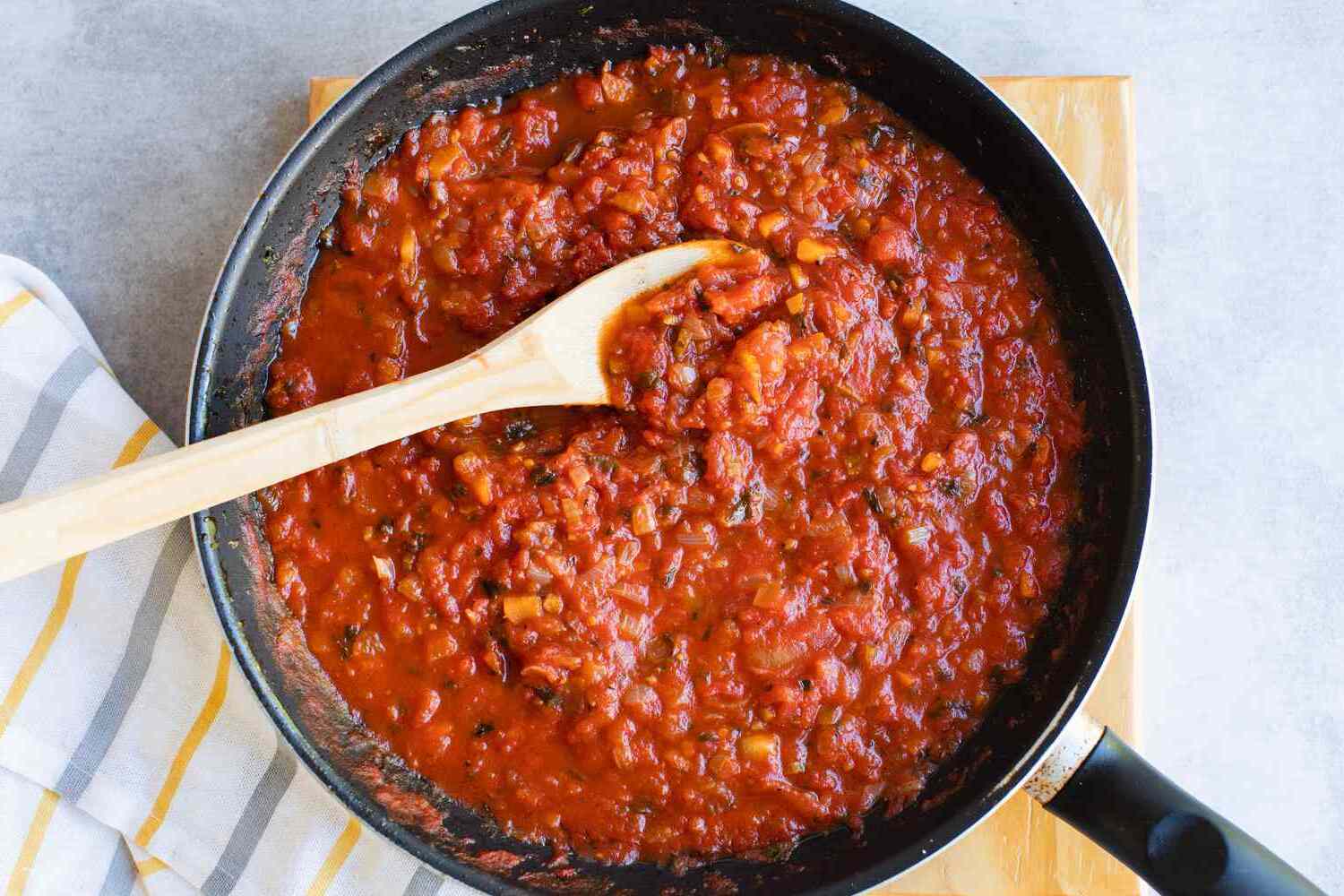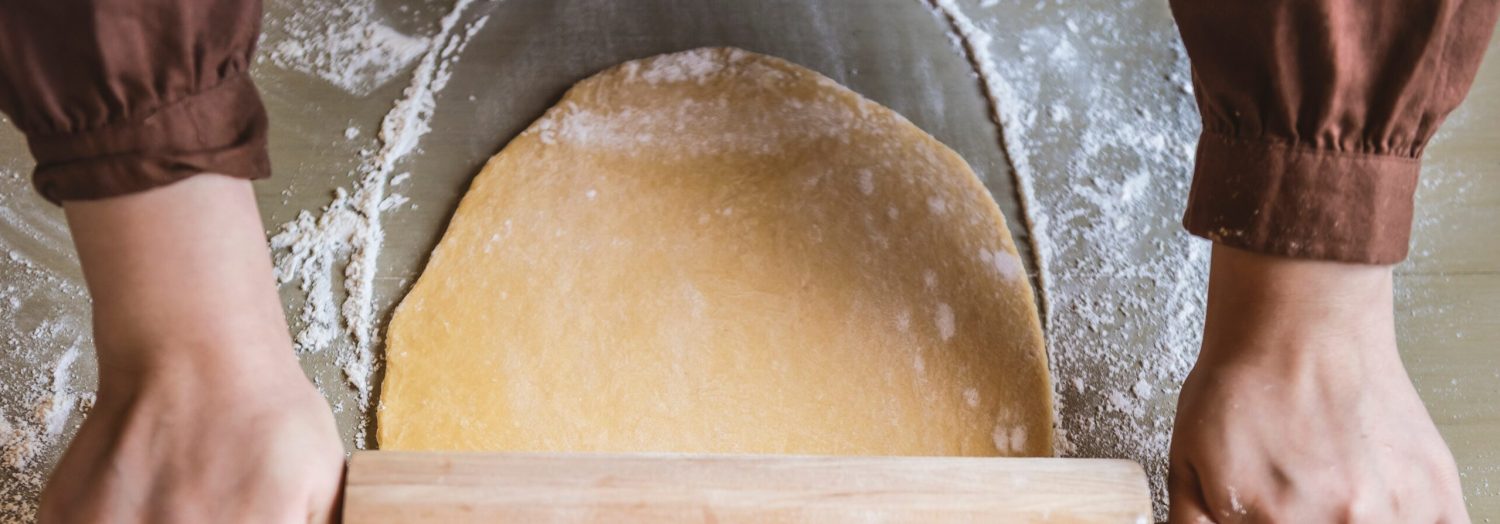Transform your pasta nights with this simple yet flavorful pasta sauce recipe. With just a handful of ingredients, you can create a rich and aromatic sauce that pairs perfectly with any type of pasta. This recipe is perfect for those who want to enjoy a homemade meal without spending hours in the kitchen.
Most of the ingredients in this recipe are common pantry staples, but if you don't usually stock dried basil or dried oregano, you might need to pick them up at the supermarket. These herbs add a depth of flavor that elevates the sauce, making it taste like it has been simmering for hours.

Ingredients For Pasta Sauce Recipe
Olive oil: Provides a rich base and helps to sauté the onions and garlic.
Onion: Adds sweetness and depth to the sauce.
Garlic: Infuses the sauce with a robust, aromatic flavor.
Tomatoes: The main component of the sauce, offering a fresh and tangy taste.
Salt: Enhances the overall flavor of the sauce.
Sugar: Balances the acidity of the tomatoes.
Dried basil: Adds a sweet, herbal note to the sauce.
Dried oregano: Contributes a slightly bitter, earthy flavor that complements the tomatoes.
Technique Tip for Making This Sauce
To enhance the flavor of your pasta sauce, consider using fresh herbs instead of dried ones. Add them towards the end of the cooking process to preserve their vibrant taste. Additionally, if you have the time, let the sauce simmer for a longer period, even up to an hour, to allow the flavors to meld together more deeply. For a richer texture, you can also blend a portion of the sauce and then mix it back in.
Suggested Side Dishes
Alternative Ingredients
olive oil - Substitute with canola oil: Canola oil has a neutral flavor and similar cooking properties.
olive oil - Substitute with butter: Butter adds a rich flavor and can be used for sautéing.
onion - Substitute with shallots: Shallots have a milder flavor and can be used in the same quantity.
onion - Substitute with leeks: Leeks provide a subtle onion flavor and can be used in a similar way.
garlic - Substitute with garlic powder: Garlic powder can be used when fresh garlic is unavailable; use ¼ teaspoon per clove.
garlic - Substitute with shallots: Shallots can add a mild garlic-like flavor when minced.
tomatoes - Substitute with tomato sauce: Tomato sauce can be used for a smoother texture; use 1 cup per can of crushed tomatoes.
tomatoes - Substitute with fresh tomatoes: Fresh tomatoes can be chopped and cooked down; use about 4-5 medium tomatoes per can.
salt - Substitute with soy sauce: Soy sauce adds saltiness and umami flavor; use sparingly to avoid overpowering the dish.
salt - Substitute with sea salt: Sea salt can be used in the same quantity for a slightly different mineral taste.
sugar - Substitute with honey: Honey adds sweetness and a slight floral note; use ½ teaspoon for every teaspoon of sugar.
sugar - Substitute with maple syrup: Maple syrup provides sweetness and a unique flavor; use ½ teaspoon for every teaspoon of sugar.
dried basil - Substitute with fresh basil: Fresh basil can be used for a more vibrant flavor; use 1 tablespoon of fresh for every teaspoon of dried.
dried basil - Substitute with dried thyme: Dried thyme offers a different but complementary herb flavor.
dried oregano - Substitute with fresh oregano: Fresh oregano can be used for a more intense flavor; use 1 tablespoon of fresh for every teaspoon of dried.
dried oregano - Substitute with dried marjoram: Dried marjoram has a similar flavor profile and can be used in the same quantity.
Alternative Recipes Similar to This Sauce
How to Store or Freeze Your Sauce
Allow the pasta sauce to cool completely before storing. This helps prevent condensation, which can lead to a watery sauce.
Transfer the cooled sauce into airtight containers or freezer bags. If using containers, leave a little space at the top to allow for expansion when freezing.
Label each container or bag with the date and contents. This makes it easier to keep track of how long the sauce has been stored.
For short-term storage, place the containers in the refrigerator. The sauce will stay fresh for up to 5 days.
For long-term storage, place the containers or bags in the freezer. The sauce can be frozen for up to 3 months without losing its flavor and texture.
When ready to use, thaw the frozen sauce in the refrigerator overnight. This gradual thawing helps maintain the sauce's consistency.
Reheat the sauce in a saucepan over medium heat, stirring occasionally. If the sauce appears too thick, add a splash of water or broth to reach the desired consistency.
For a quick thaw, place the sealed freezer bag in a bowl of cold water. Change the water every 30 minutes until the sauce is thawed.
Avoid reheating the sauce multiple times, as this can affect its flavor and texture. Only reheat the amount you plan to use.
If you have leftover sauce after reheating, store it in the refrigerator and use it within 2 days.
How to Reheat Leftovers
Stovetop Method:
- Pour the pasta sauce into a saucepan.
- Heat over medium-low heat, stirring occasionally to prevent sticking.
- Once the sauce starts to bubble, reduce the heat to low and simmer for 5-10 minutes until thoroughly heated.
Microwave Method:
- Transfer the pasta sauce to a microwave-safe container.
- Cover the container with a microwave-safe lid or plastic wrap, leaving a small vent.
- Heat on high for 1-2 minutes, then stir.
- Continue heating in 30-second intervals, stirring in between, until the sauce is hot.
Oven Method:
- Preheat your oven to 350°F (175°C).
- Place the pasta sauce in an oven-safe dish and cover with aluminum foil.
- Bake for 20-30 minutes, stirring halfway through, until the sauce is heated evenly.
Double Boiler Method:
- Fill the bottom pot of a double boiler with water and bring to a simmer.
- Place the pasta sauce in the top pot.
- Stir occasionally, heating until the sauce is warmed through.
Slow Cooker Method:
- Pour the pasta sauce into the slow cooker.
- Set the slow cooker to low heat.
- Heat for 1-2 hours, stirring occasionally, until the sauce is hot.
Sous Vide Method:
- Place the pasta sauce in a vacuum-sealed bag or a ziplock bag using the water displacement method.
- Set your sous vide machine to 140°F (60°C).
- Submerge the bag in the water bath and heat for 30-45 minutes until the sauce is warmed through.
Essential Tools for Making This Sauce
Saucepan: A medium-sized saucepan is essential for cooking the sauce evenly and allowing it to simmer properly.
Wooden spoon: A wooden spoon is ideal for stirring the sauce, as it won't react with the acidic tomatoes.
Chef's knife: A chef's knife is necessary for chopping the onion and mincing the garlic efficiently.
Cutting board: A sturdy cutting board provides a safe surface for chopping the onion and garlic.
Measuring spoons: Accurate measuring spoons ensure you add the right amounts of salt, sugar, basil, and oregano.
Can opener: A can opener is needed to open the can of crushed tomatoes.
Stirring spoon: A stirring spoon helps in mixing the ingredients thoroughly while cooking.
Serving spoon: A serving spoon is useful for ladling the sauce over your favorite pasta.
Time-Saving Tips for Making This Sauce
Prepare ingredients in advance: Chop the onion and mince the garlic ahead of time to streamline the cooking process.
Use pre-crushed tomatoes: Opt for canned crushed tomatoes to save the effort of crushing fresh ones.
Batch cook: Make a larger quantity of pasta sauce and freeze portions for future meals.
Simmer while multitasking: Let the sauce simmer while you prepare other parts of your meal or clean up the kitchen.
Use a food processor: Quickly chop the onion and mince the garlic using a food processor.

Pasta Sauce Recipe
Ingredients
Main Ingredients
- 2 tablespoon Olive Oil
- 1 medium Onion, chopped
- 2 cloves Garlic, minced
- 1 can Tomatoes, crushed (400g)
- 1 teaspoon Salt
- 1 teaspoon Sugar
- 1 teaspoon Dried Basil
- 1 teaspoon Dried Oregano
Instructions
- Heat olive oil in a saucepan over medium heat.
- Add chopped onion and cook until translucent.
- Add minced garlic and cook for another minute.
- Add crushed tomatoes, salt, sugar, basil, and oregano. Stir well.
- Simmer on low heat for 20-30 minutes, stirring occasionally.
- Serve over your favorite pasta.
Nutritional Value
Keywords
Suggested Appetizers and Desserts
More Amazing Recipes to Try 🙂
- Ground Beef and Vegetable Stew Recipe1 Hours
- Bacon Wrapped Barbeque Shrimp Recipe25 Minutes
- Beef and Cabbage Stew Recipe1 Hours 15 Minutes
- Beef Noodle Soup Recipe2 Minutes
- Chinese Chicken Vegetable Soup Recipe45 Minutes
- Zuppa Toscana Recipe45 Minutes
- Chicken with Barley Soup Recipe1 Hours
- Buffalo Chicken Wraps Recipe25 Minutes

Leave a Reply